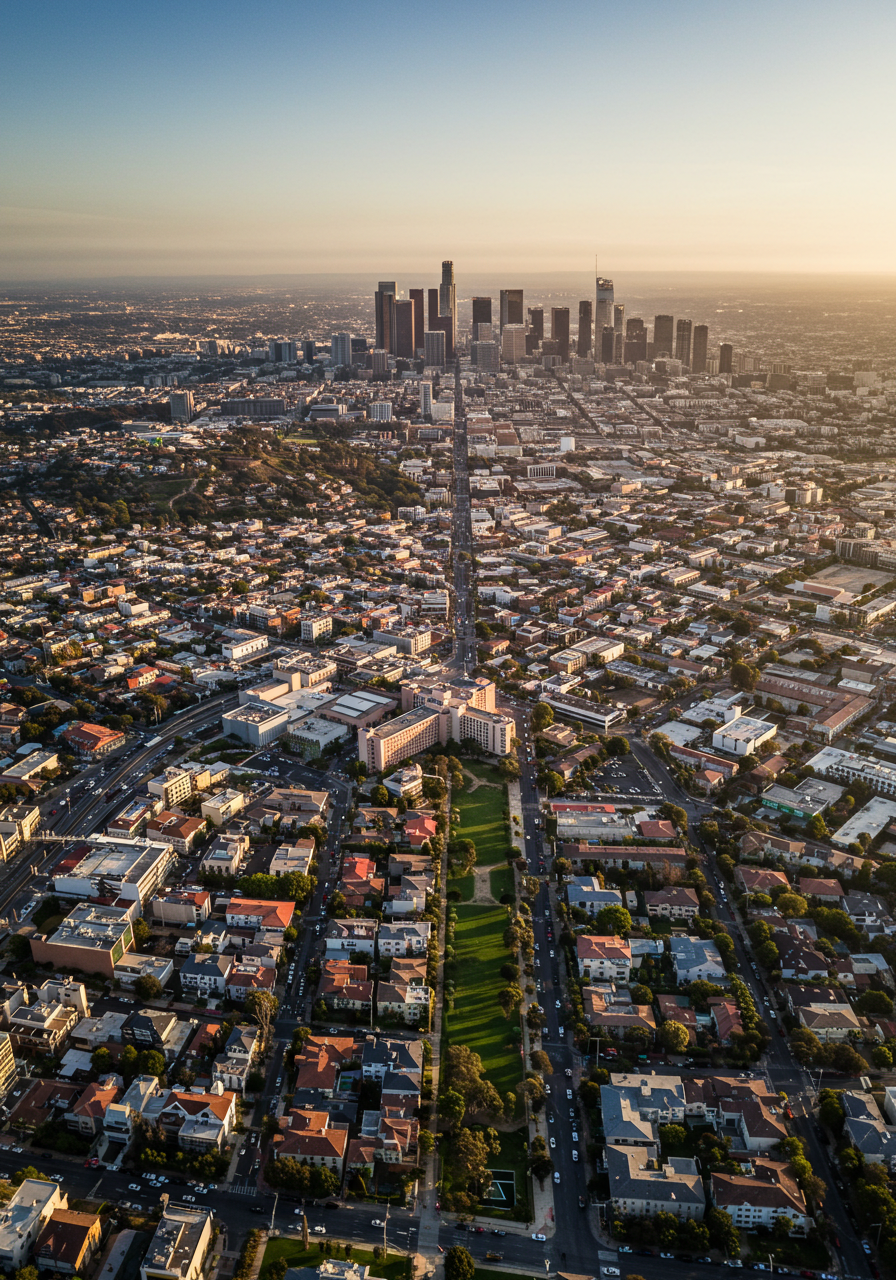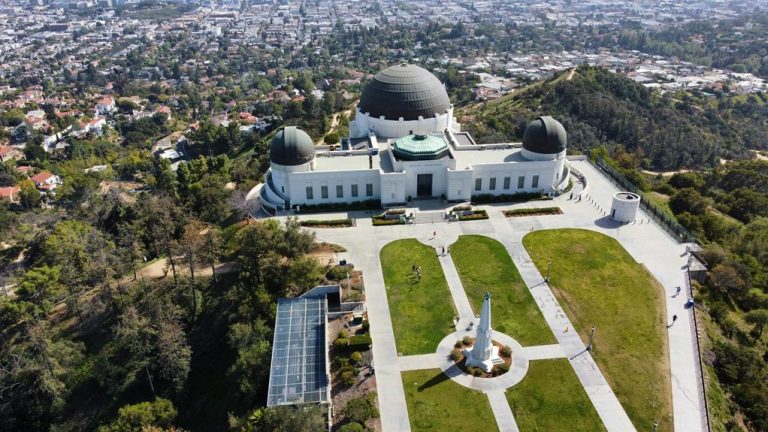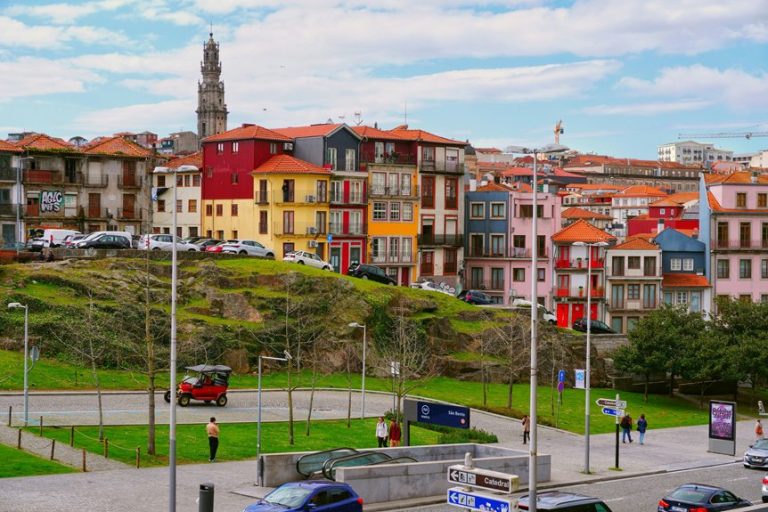25 Strange but True Stories From Los Angeles History

Los Angeles is a city brimming with peculiar tales that often blur the lines between fact and fiction. From the chilling Curse of the Chinese Theater to the unresolved enigma of the Black Dahlia Murder, these stories reveal much about the city’s complex identity. Each narrative, steeped in history and intrigue, invites scrutiny. What might these strange occurrences tell us about the cultural landscape of L.A.? The answers might surprise you.
The Curse of the Chinese Theater
Although many iconic landmarks in Los Angeles boast fascinating histories, few are as intriguing as the Chinese Theater, which has long been rumored to be cursed.
This Hollywood legacy is entwined with superstitions linked to its grand openings and famous premieres. Visitors often report strange occurrences, suggesting a lingering energy.
Such tales contribute to the theater’s mystique, enhancing its allure in popular culture.
The Great Los Angeles Air Raid
The eerie atmosphere surrounding the Chinese Theater isn’t the only peculiar chapter in Los Angeles history; the Great Los Angeles Air Raid of 1942 stands out as a striking event that left residents both confused and terrified.
Triggered by wartime anxiety, the air raid alarmed citizens who believed they were under attack, leading to chaotic gunfire and widespread panic, despite no enemy planes ever being present.
The Ghosts of the Hollywood Sign
Legends swirl around the Hollywood Sign, transforming this iconic landmark into a canvas for ghostly tales and unexplained phenomena.
Visitors often report ghostly encounters, claiming to see shadowy figures or hear whispers in the night.
Haunted legends persist, suggesting that the spirits of those associated with the sign linger on, forever tied to the glitz and glamour of Hollywood’s past.
The Black Dahlia Murder Mystery
What drives the fascination with the Black Dahlia murder, one of Los Angeles’ most infamous unsolved cases?
This Hollywood scandal captured the public’s imagination through a media frenzy surrounding the brutal crime mystery.
Police investigations revealed limited forensic evidence, while various suspect theories emerged, intertwining with the victim’s life.
The case’s unresolved nature continues to influence cultural narratives, leaving a lasting impact on society.
The Day the Dodgers Moved West
When you consider the impact of sports on Los Angeles culture, the Dodgers’ move from Brooklyn in 1958 stands out as a pivotal moment.
This Dodgers relocation reshaped Los Angeles baseball by:
- Introducing a new fan base enthusiastic for competition.
- Enhancing the city’s identity through sports.
- Establishing a legacy that influenced future franchises.
The Dodgers’ arrival marked a significant shift in the sports landscape.
The Rise and Fall of the Lizard King
The cultural landscape of Los Angeles in the 1960s wasn’t only defined by sports but also by the music scene, where figures like Jim Morrison, famously known as the Lizard King, emerged as icons.
His provocative lyrics and charismatic performances captivated audiences, symbolizing a countercultural revolution.
However, Morrison’s self-destructive tendencies led to his untimely demise, marking a tragic end to his meteoric rise.
The Great Los Angeles Flood of 1938
Although many associate Los Angeles with sunshine and glamour, the Great Los Angeles Flood of 1938 starkly illustrated the city’s vulnerability to natural disasters.
The flood’s aftermath prompted critical evaluations of Los Angeles infrastructure, revealing significant flaws.
Key issues included:
- Inadequate drainage systems
- Poor urban planning
- Insufficient flood control measures
These factors collectively contributed to the catastrophic impact on the city and its residents.
The Haunted Hotel Cecil
As you explore the eerie history of Los Angeles, you’ll likely encounter the notorious Hotel Cecil, a site steeped in tales of tragedy and hauntings.
With its dark past and infamous reputation, the Cecil Hotel has witnessed chilling encounters and tragic stories.
Eerie guests report ghostly sightings, adding to its haunted history, making it a focal point for those intrigued by the supernatural.
The Birthplace of the LA Riots
In April 1992, a spark ignited a powder keg of tension in Los Angeles, leading to the eruption of the LA Riots. The incident involving Rodney King revealed deep-rooted racial tensions, prompting a community response.
Key factors include:
- Police brutality and its perception.
- Economic disparities fueling frustration.
- Media influence shaping public opinion.
The aftermath sparked reforms and an enduring activism movement.
The Secret Tunnels of Los Angeles
The tumult of the LA Riots revealed not only societal fractures but also the hidden layers of Los Angeles itself—its secret tunnels.
These hidden passages form extensive underground networks, often forgotten, yet integral to the city’s history. They served various purposes, from transportation to shelter, reflecting the complex interplay between urban development and social needs.
Exploring these tunnels uncovers forgotten narratives of resilience and survival.
The UFO Sightings Over Griffith Park
While many visitors flock to Griffith Park for its stunning views and recreational trails, the skies above have also played host to a series of intriguing UFO sightings that have puzzled both locals and enthusiasts alike.
Key reports include:
- Multiple glowing orbs observed in the night sky.
- Witness accounts of alien encounters.
- Unexplained aerial phenomena disrupting the park’s tranquility.
These events continue to spark curiosity and debate.
The Real-Life Inspiration for Tarzan
Though many people associate Tarzan with fictional adventures in the jungle, the character’s creation was inspired by real-life individuals, most notably a young boy named John “Jack” McCoy.
McCoy’s unique upbringing in the wild influenced Edgar Rice Burroughs, leading to the Tarzan origins we recognize today.
This blend of reality and imagination brought forth a timeless jungle adventure that continues to captivate audiences.
The Disappearance of the “Golden State Killer”
As investigators explored the chilling case of the “Golden State Killer,” a pattern emerged that both fascinated and horrified the public.
The cold case, long unsolved, saw breakthroughs thanks to modern forensic methods.
Key elements included:
- DNA evidence leading to identification.
- Victim testimony enhancing profiles.
- Sophisticated technology uncovering links.
These developments reignited interest and ultimately led to the capture of the elusive suspect.
The Birth of the First Hot Dog Stand
The inception of the first hot dog stand in Los Angeles marks a pivotal moment in culinary history, transforming street food culture.
Emerging from European hot dog origins, it catered to a growing urban population seeking quick, affordable meals.
This innovation not only popularized the hot dog but also set the stage for diverse street food offerings, enriching the city’s vibrant food scene.
The Legend of the Chupacabra in L.A
Legends often weave themselves into the fabric of a city, and in Los Angeles, the tale of the Chupacabra stands out as a particularly intriguing myth.
The phenomenon includes:
- Numerous Chupacabra sightings reported over the years.
- The connection to urban legends surrounding strange animal attacks.
- The cultural impact on local folklore and media.
These elements reveal how urban legends can shape perceptions of reality.
The Mysterious Death of Natalie Wood
Natalie Wood’s tragic death in 1981 remains one of Hollywood’s most puzzling mysteries, enthralling both fans and investigators alike.
Her disappearance from a yacht under suspicious circumstances raised numerous questions. Witness accounts varied, and evidence seemed inconclusive, complicating the investigation.
Theories emerged, yet the truth remains elusive, leaving many to ponder the unresolved details surrounding her untimely demise.
The Forgotten History of the Los Angeles Aqueduct
While many residents enjoy the conveniences of modern Los Angeles, few realize the monumental engineering feat that made it all possible: the Los Angeles Aqueduct.
This infrastructure project not only secured essential water rights but also raised concerns about its environmental impact.
Key aspects include:
- Water sourcing from distant Sierra Nevada.
- Legal battles over water rights.
- Changes to local ecosystems.
The Strange Tale of the Hollywoodland Sign
Although the Hollywoodland sign is an iconic symbol of the film industry, its history is steeped in intrigue and oddities that often go unnoticed.
Originally erected in 1923 as a real estate advertisement, the Hollywood Sign has transformed into a revered iconic landmark.
Its evolution reflects changing societal values, cultural significance, and the complexities of fame, making it a fascinating subject of study in Los Angeles history.
The Infamous Black Cat Café
As the Hollywood Sign became a symbol of fame and aspiration, another establishment in Los Angeles epitomized the vibrant yet tumultuous culture of the era: the Black Cat Café.
This iconic venue was known for:
- Hosting groundbreaking LGBTQ+ performances,
- Serving as a meeting point for artists and activists,
- Playing a pivotal role in the café history of Los Angeles.
Its legacy remains influential today.
The Great L.A. Earthquake of 1994
On January 17, 1994, the Northridge earthquake struck Los Angeles, registering a magnitude of 6.7 and causing extensive damage across the region.
This disaster highlighted the importance of earthquake preparedness, as many structures were inadequately equipped.
The need for seismic retrofitting became evident, prompting city officials to enforce stricter building codes to enhance safety and resilience against future earthquakes.
The Unsolved Mystery of the Zodiac Killer
The Zodiac Killer remains one of the most infamous unsolved cases in American criminal history, enthralling true crime enthusiasts and investigators alike for decades.
Key elements of this mystery include:
- Zodiac letters, taunting police and the public.
- Cryptic symbols, challenging cryptographers to decode his messages.
- Unidentified victims, leaving families without closure.
The interplay of these factors fuels ongoing fascination and investigation into the killer’s identity.
The Rise of the Surrealist Movement in L.A
Emerging from the chaos of the 1940s and 1950s, the Surrealist movement in Los Angeles transformed the artistic landscape, enchanting both local and international audiences.
Surrealist artists like Edward Kienholz and Marjorie Strider employed dream-like imagery to challenge reality, inviting viewers into their imaginative worlds.
This exploration of the subconscious left an indelible mark, fostering a distinct, vibrant culture that continues to influence contemporary art.
The Bizarre Origins of the Griffith Observatory
While many people admire the Griffith Observatory for its stunning architecture and panoramic views of Los Angeles, few know about the peculiar circumstances surrounding its creation.
It emerged from a unique blend of factors:
- Griffith Park’s historical significance as a public space.
- A dedication to astronomical advancements.
- A commitment to public accessibility for all.
These elements shaped its legacy, making it a cherished landmark.
The Secret Life of the Hollywood Starlet
As you explore the glitzy world of Hollywood, you’ll uncover the fascinating yet often hidden lives of its starlets, who navigate a complex interplay of fame, scrutiny, and personal ambition.
Behind the glamour, Hollywood secrets reveal stories of starlet scandals, from tumultuous relationships to secretive deals.
These revelations illustrate how fame can both empower and ensnare, shaping the narratives of their lives.
The Lost Art of the L.A. Mural Scene
Though often overshadowed by the glimmer of Hollywood, the L.A. mural scene represents a vibrant yet underappreciated facet of the city’s artistic identity.
The recent mural revival emphasizes urban storytelling, reflecting community voices.
Key aspects include:
- Cultural heritage preservation
- Social justice themes
- Community engagement
These elements highlight the murals as powerful narratives, forging connections within Los Angeles’ diverse landscape.






